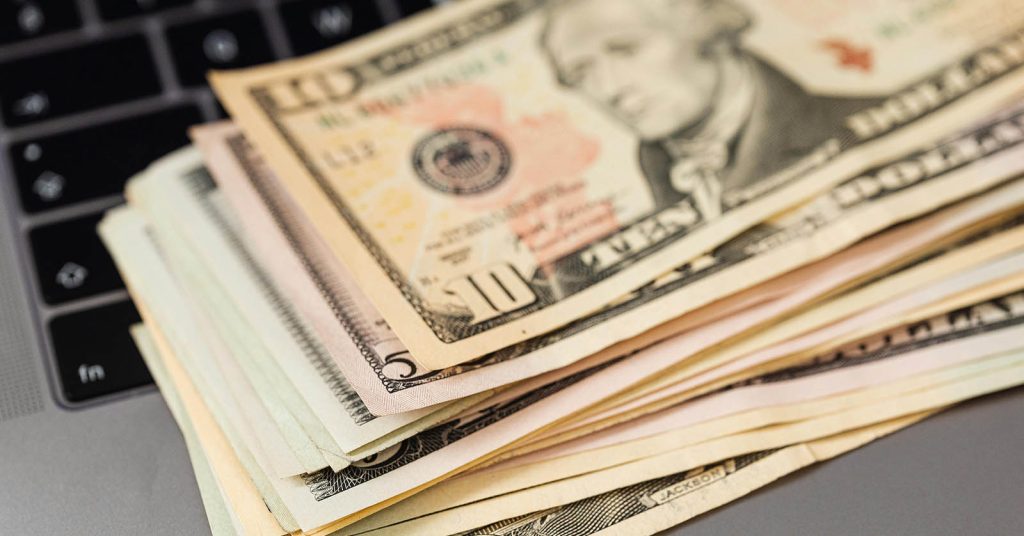Saving money isn’t about dozens of hacks; it’s about a handful of systems that keep working when life gets noisy. In 2025, the biggest wins come from (1) automating cash flow, (2) capturing tax-advantaged accounts (401(k), IRA, HSA, FSAs), (3) earning more on cash (HYSA/CDs/I bonds), (4) cutting recurring costs you’ve stopped noticing, (5) harvesting energy-efficiency credits, (6) building “save more tomorrow” escalators, and (7) tightening timing — so your money lands where it should before you can spend it. Below you’ll find a prioritized playbook, current U.S. figures and limits, two concise tables, and practical examples that show how to translate ideas into dollars this year. We also cite authoritative sources (IRS, BLS, FDIC, TreasuryDirect, ENERGY STAR) so every number checks out if an auditor — or a skeptical friend — asks. The goal isn’t perfection; it’s momentum that compounds. And the systems here survive busy seasons, job changes, and market noise without constant willpower.
Key Takeaways
- Automate first, then optimize: route paycheck money to savings/investing before it hits checking; raise the default by 1%–2% each quarter.
- Use tax-advantaged accounts: 401(k) employee limit = $23,500 (2025); IRA = $7,000; HSA = $4,300 self / $8,550 family. Catch-ups apply by age.
- Make cash earn its keep: top HYSAs are ~5.00% APY as of late Sept 2025; I bonds for issues May–Oct 2025 yield 3.98% for the first six months.
- Harvest home energy credits: up to $3,200 annually through 2025 via the Energy Efficient Home Improvement Credit (30% of qualified costs).
- Protect cash safely: FDIC insurance covers $250,000 per depositor, per bank, per ownership category. Use multiple banks/categories if needed.
1) Automate Cash Flow: “Pay Yourself First,” Then Raise the Default
The simplest way to save more is to never see money that isn’t already spoken for. Direct a fixed percentage of each paycheck — 5%, then 7%, then 10%+ — straight into savings and investment accounts. Use separate destinations for separate jobs: emergency fund (HYSA), retirement (401(k)/IRA/HSA), and near-term goals (HYSA or short CD ladder). Next, turn on automatic escalation in your 401(k) (1%–2% each year or quarter), and mirror that habit for savings transfers; you won’t miss what you never took home. If your employer match is on the table, raise contributions at least to the match threshold — it’s the highest ROI you’ll find, because it’s literally free money paired with tax deferral or Roth treatment. For IRA funding, set a monthly autopay that reaches the annual limit by December so you’re not scrambling in April. Finally, align bill due dates to land just after payday and set minimum autopay for every card to avoid late fees — late marks are expensive and can hike insurance and loan pricing. The playbook doesn’t require perfect budgeting; it requires predictable pipes that move cash the minute it arrives.
2) Max the Best Tax Shelters (401(k), IRA, HSA, FSA) — Use 2025 Limits
Tax-advantaged accounts are the backbone of long-term savings because they cut your tax bill and automate discipline. In 2025, the employee deferral limit for 401(k)/403(b)/most 457 plans is $23,500. There’s also a higher catch-up window for ages 60–63 (SECURE 2.0) — $11,250 instead of the usual $7,500; confirm plan implementation and whether those catch-ups must be Roth. For IRAs, the combined Traditional + Roth contribution limit is $7,000 ($8,000 if age 50+). Health Savings Accounts (HSA) offer triple tax benefits: deductible contributions, tax-free growth, and tax-free qualified withdrawals; 2025 limits are $4,300 (self-only) and $8,550 (family). If you’re not HSA-eligible, a Health FSA can still cut taxes; the 2025 health FSA contribution cap is $3,300 (employer plans may allow a limited carryover). Dependent-care FSA remains $5,000 household max ($2,500 if married filing separately). These ceilings aren’t just trivia — they’re targets. Start with your employer match, then HSA (if eligible), then Roth or Traditional IRA based on your tax bracket, then circle back to the 401(k).
3) Make Idle Cash Work: HYSA, CDs, and I Bonds (and Keep It FDIC-Safe)
Emergency funds and near-term goals belong in safe, interest-bearing accounts — not in checking. As of late September 2025, leading high-yield savings accounts advertise around ~5.00% APY; rates float, but you can keep shopping because transfers are easy. For money you can lock for a set period, consider a CD ladder (e.g., 3-, 6-, 12-, 18-month rungs) to blend yield with periodic liquidity. For inflation-linked cash, Series I Savings Bonds issued from May–Oct 2025 earn a 3.98% composite rate for their first six months; rates reset each six months after your purchase date. Keep safety tight: FDIC insurance covers $250,000 per depositor, per bank, per ownership category — you can multiply coverage by using different ownership categories or spreading funds across insured banks. Credit unions have similar protection via NCUA. Document the accounts you’ve opened and set quarterly reminders to review APY, CD maturities, and any bank that drifts below competitive rates.
4) Cut Recurring Costs You’ve Stopped Seeing (Insurance, Subscriptions, Utilities)
Big monthly wins often come from line items you rarely audit. Start with auto and homeowners insurance: many states allow credit-based insurance scoring, and underwriting changes mean the same driver can get very different quotes. Re-shop every 12 months (or at renewal) and ask your current carrier to repricing-match competitors. Review medical premiums vs. expected usage; an HSA-qualified high-deductible plan can save taxes if you cash-flow minor expenses and invest the HSA for long-term healthcare. On subscriptions, print a 90-day card/bank statement, highlight anything you wouldn’t sign up for again today, and cancel ruthlessly. For utilities, tackle the boring stuff that quietly saves: thermostat scheduling, LED bulbs, and insulation/sealing. Then step up to federal energy-efficiency credits (see strategy #5) — because a smart upgrade can cut your bill and your taxes at once. Revisit your mobile plan (MVNOs), review bank fees, and consolidate accounts if you’re being charged for features you don’t need. None of these steps are glamorous, but a two-hour audit can free up $100–$300/month that you permanently redirect to savings.
5) Use 2025 Energy Credits to Lower Bills and Taxes
If you own a home, 2025 remains a prime year to upgrade efficiency because the Energy Efficient Home Improvement Credit (IRC §25C) gives you up to $3,200/year in credits through December 31, 2025. The credit is generally 30% of eligible costs (with per-item caps) for improvements like heat pumps, insulation, certain electrical upgrades, and energy audits. Keep receipts and manufacturer certification statements and file Form 5695 with your return. Combine this with utility rebates where available, and prioritize upgrades with the strongest bill impact first (e.g., sealing/insulation before fancy hardware). For solar and other residential clean energy systems, a separate Residential Clean Energy Credit (IRC §25D) offers 30% with different rules and timelines. The reason to do this now is simple: you reduce ongoing utility spend and harvest a federal credit — stack the two and the payback shortens dramatically.
6) Build “Save More Tomorrow” Escalators (and Capture One-Time Money)
Behavior beats willpower. Create automatic escalators that raise savings/retirement contributions after every raise or quarterly by a fixed 1%–2%. Direct a slice of windfalls — tax refunds, RSU vests, bonuses — into savings before they blend into lifestyle creep. If your employer offers an auto-escalation feature in the 401(k), turn it on and set the target (e.g., +1% each quarter until you hit 15%+). Consider the Saver’s Credit if your income qualifies in 2025 (phasing out after 2026 when the Saver’s Match arrives in 2027); it’s a tax credit on contributions to retirement accounts and can enhance your effective return. If you’ve over-saved in a 529 — or fear doing so — remember that starting in 2024 you can roll eligible leftover 529 funds to a Roth IRA for the beneficiary (lifetime cap $35,000, must respect annual IRA limits, 529 open 15+ years). These levers don’t just save a few dollars — they institutionalize saving so the baseline keeps rising without fresh effort.
7) Tighten Timing: Inflation, BNPL, and When to Re-Shop Big-Ticket Items
Two timing rules dominate 2025: first, inflation is cooler than 2022–23 but still present, so lock recurring savings early and capture higher yields while they last. The CPI-U 12-month change for August 2025 came in around 2.9% (core ~3.1%), with PCE — the Fed’s preferred gauge — also running in the high-2s; your margin over inflation on cash is still meaningful if you’re earning ~5% APY. Second, pay attention to credit visibility: BNPL data (e.g., Apple Pay Later; Affirm’s reporting of all pay-over-time loans from April 1, 2025) is increasingly showing up on credit files, and missed payments that go to collections can raise your costs elsewhere (insurance, loans). Re-shop auto insurance and mobile annually, and mortgage/HELOC quotes when your credit tier or rates shift. The principle is simple: you can’t control macro, but you can control when you lock prices, yields, and quotes — and that calendar discipline shows up as dollars saved.
| 2025 Limits & Useful Numbers | Amount | Notes |
|---|---|---|
| 401(k)/403(b) employee limit | $23,500 | Catch-up (60–63): $11,250 (SECURE 2.0); check plan/Roth catch-up rules. |
| IRA (Traditional + Roth, combined) | $7,000 ($8,000 age 50+) | Subject to income/coverage phase-outs for deductibility and Roth eligibility. |
| HSA contribution limit | $4,300 self-only / $8,550 family | Requires HDHP; see 2025 HDHP minimum deductibles/out-of-pocket caps. |
| Health FSA (medical) | $3,300 | Employer plan may allow limited carryover (check SPD). |
| Dependent-Care FSA (household max) | $5,000 ($2,500 MFS) | Household limit; employer testing may limit highly compensated employees. |
| HYSA top APYs (late Sept 2025) | ~5.00% APY | Market leaders change; re-shop quarterly. |
| I bond composite (issues May–Oct 2025) | 3.98% (first 6 months) | Resets every 6 months from purchase date; annual purchase caps apply. |
| Energy Efficient Home Improvement Credit | Up to $3,200/year | 30% of eligible costs through 12/31/2025; item caps apply. |
| FDIC insurance limit | $250,000 | Per depositor, per bank, per ownership category. |
| Quick Win | What to Do | Typical $/Month | Timeline |
|---|---|---|---|
| Raise savings rate by 2% | Turn on 401(k)/paycheck auto-escalation; mirror with HYSA transfer. | $100–$200 (on $60–$120k income) | Instant + ongoing |
| Refi your cash (HYSA/CD) | Move idle cash from 0% to ~5% APY; ladder CDs if funds are parked. | $42/month per $10k (at ~5% vs. 0%) | Same week (ACH) |
| Energy credit + insulation | Seal/insulate; claim 30% §25C credit up to $3,200. | $20–$100+ utility savings | 1–2 billing cycles + tax filing |
| Insurance re-shop | Pull 3 quotes; ask current carrier to match. | $25–$75 (varies by state/driver) | 1–2 hours |
Frequently Asked Questions (FAQs)
How big should my emergency fund be in 2025?
Common targets are 3–6 months of essential expenses in a HYSA. If income is variable or you’re a homeowner with an older system/appliances, lean toward 6–9 months. Re-estimate yearly as bills and risk change.
Which should I fund first — 401(k), HSA, or IRA?
Typical order: get the full employer match in your 401(k) → max HSA if eligible (triple tax benefit) → fund Roth/Traditional IRA → then increase 401(k) to the annual limit. Adjust for your bracket and employer match generosity.
Are online banks safe for large cash balances?
Yes — if they’re FDIC-insured and you stay within coverage limits. FDIC covers $250,000 per depositor, per bank, per ownership category; you can increase coverage by spreading across banks/categories.
Are I bonds still worth it at 3.98%?
They can be for inflation-hedged cash you won’t need for a year (there’s a 12-month lockup and a 3-month interest penalty if redeemed before 5 years). Compare with HYSA/CD yields and your timeline.
What about medical vs. dependent-care FSAs?
The health FSA (2025 cap $3,300) covers medical/dental/vision; many plans allow a small carryover. The dependent-care FSA helps with childcare/eldercare up to $5,000/yr household, but it’s “use-it-or-lose-it.”
Sources
- IRS — 401(k) limit $23,500 (2025) & catch-ups
- IRS — IRA contribution limits (2025)
- IRS Pub 969 — HSA rules & 2025 limits
- IRS — Health FSA 2025 limit $3,300
- LCW Legal — 2025 FSA/DCAP summary ($5,000 household)
- FDIC — Deposit insurance overview ($250k per depositor/bank/category)
- FDIC — Your Insured Deposits (brochure)
- FDIC — National rates & caps (context for retail deposit rates)
- Fortune — Best savings account rates (Sep 30, 2025 ~5.00% APY)
- TreasuryDirect — I bond rates (May–Oct 2025 3.98% composite)
- Treasury — Savings bond rate announcement (May 2025)
- BLS — CPI Summary (Aug 2025 ~2.9% YoY; core ~3.1%)
- IRS — Energy Efficient Home Improvement Credit (up to $3,200 through 2025)
- ENERGY STAR — Federal tax credits for energy efficiency (through 2025)
- IRS Pub 590-A — 529-to-Roth IRA rollover rules (post-2023)
- Fidelity — 529 → Roth IRA overview (lifetime $35k cap; 15-year rule)
- CRS — Saver’s Credit and upcoming Saver’s Match (2027)









